The taste of Ethiopian Sidamo coffee beans introduces the flavor characteristics and stories of Ethiopian coffee.
Professional coffee knowledge exchange more coffee bean information please follow the coffee workshop (Wechat official account cafe_style)
Qianjie Coffee recently put on the shelves two Ethiopian competition-grade coffee beans, one is the 22nd place in the Coe Cup test, and the other is the native variety of coffee beans that won the TOH Cup test washing group. In this paper, Qianjie coffee from the competition events, producing areas, varieties, raw bean treatment, baking, cup testing, brewing, to take a look at the performance of these two coffee beans.
The difference between COE Cup Test and toh Cup Test
COE:C.O.E. Refers to (Cup Of Excellence) International Coffee Cup Test, C.O.E. The judges are the most credible in the top coffee competition, and the ones who can stand out from the strict competition are the best coffee in that country that year, and they have to keep a high score in each cup test to be at the top before they can be crowned with C.O.E. The winning logo shows that the coffee beans of Yusheng Manor will adopt a unified and specific online auction method to allow buyers around the world to bid for coffee beans in an open and transparent manner. in this way, the popularity of outstanding award-winning farms spreads quickly and the coffee in competition batches can get a better price.
TOH:TOH raw bean competition is the most important raw bean competition in African coffee growers every year, which is called "East Africa Harvest season Flavor Competition" (East Africa Taste of Harvest competition;TOH). The event is similar to the Cup of Excellence;COE in Central and South America. Since its establishment, the TOH Raw Bean Competition has become an arena for discovering the best coffee in 12 African countries, including Kenya, Ethiopia, Uganda and Congo. To put it simply, the Coe cup test competition is a coffee cup test competition from all countries in the world, while TOH only faces the coffee cup test competition from Africa.
Different planting areas
The COE#22 of Qianjie Coffee comes from the Sidamo Arsi area, where the coffee is grown on a smallholder model. The average smallholder farm is not large, about 2-3 hectares, but even so, they tend to be slightly larger than the usual 1.5-2 ha in most parts of Ethiopia. Although the current coffee planting technology is still in the stage of development, compared with other producing areas, the development of coffee planting technology in West Alxi is very fast. Coffee farmers do not need to hire temporary or full-time workers, but choose coffee with the help of their families. This allows them to better control the quality of coffee, and processing stations usually pay extra for ripe red cherries, greatly increasing the enthusiasm of coffee farmers. The sugar content of the full-ripe coffee fruit will naturally be much higher. Through the cup test of Qianjie coffee, it is found that the sweetness of coffee beans in the changed areas will be higher than those in other producing areas.
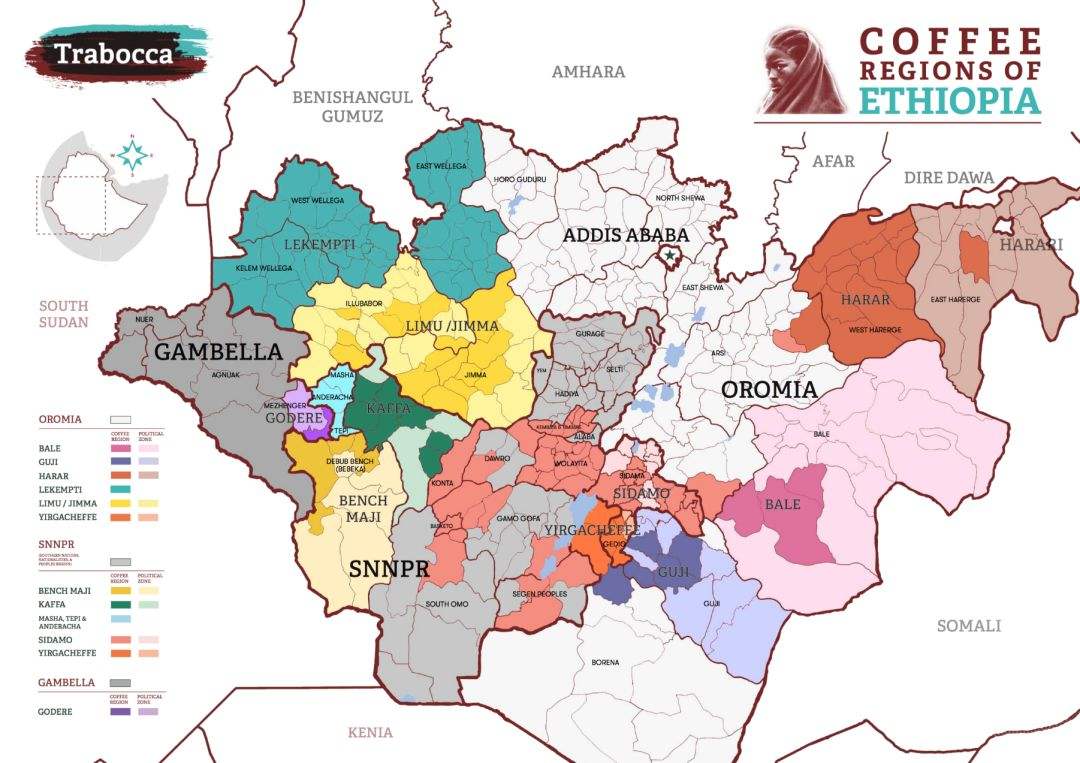
The TOH washing group # 01 of Qianjie coffee comes from the Wulaga producing area, which is a sub-producing area in the Guji producing area, with an altitude of 2300m. Although the town of Wulaga is located in the Guji producing area, it is geographically closer to the high mountain area of Yega Xuefei at an altitude of 2200m. Before Guji became famous, most of the coffee beans processed by Wulaga's processing plant were sold under the name of Yega Xuefei. After the Ethiopian Commodity Exchange (ECX) declared the Guji producing area as an independent producing area, the alpine area in the western Uraga may directly take the name of the village or cooperative as the production unit and marked on the sack. Uraga production area has also won the TOH championship many times in recent years. Wulaga producing area is close to Yega Xuefei producing area, through cup testing of coffee beans in this producing area, it is found that the coffee in Wulaga producing area has the flavor characteristics of citrus acid and jasmine fragrance.
Different varieties of coffee
The official variety information given by COE#22 of Qianjie Coffee is Iron pickup. The oldest native variety in Ethiopia, all Arabica are derived from iron pickups. The top leaf of the iron pickup is bronzed, and the bean body is oval or thin in shape; the flavor is elegant, but the physique is weak, the disease resistance is poor, and the fruit yield is low. Qianjie coffee tests tin cards from different places through cups. No matter where they are planted, tin cards have spread all over the world with their unique quiet and clean flavor, balanced characteristics, and taste characteristics.
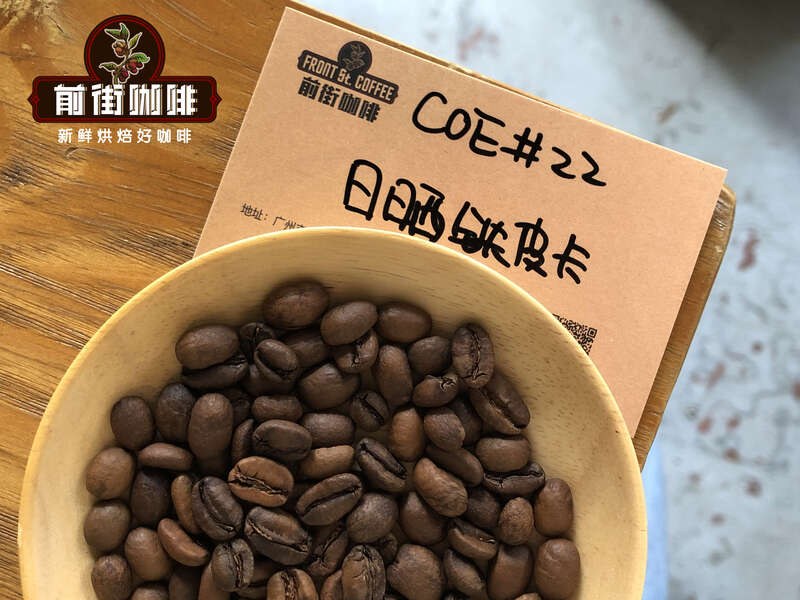
The official information given by the TOH washing Group # 01 of Qianjie Coffee is the original variety of Ethiopia. The varieties of Erica coffee beans are native species, and most Ethiopian coffee varieties are named after this name, in fact, because there are so many varieties, it is like the natural gene bank in Arabica, on the one hand, there are many varieties, and it is difficult to identify and classify them. on the one hand, the Ethiopian government is unwilling and unable to disclose information about these varieties for the sake of protection. That's why Essel's coffee beans are of different sizes.
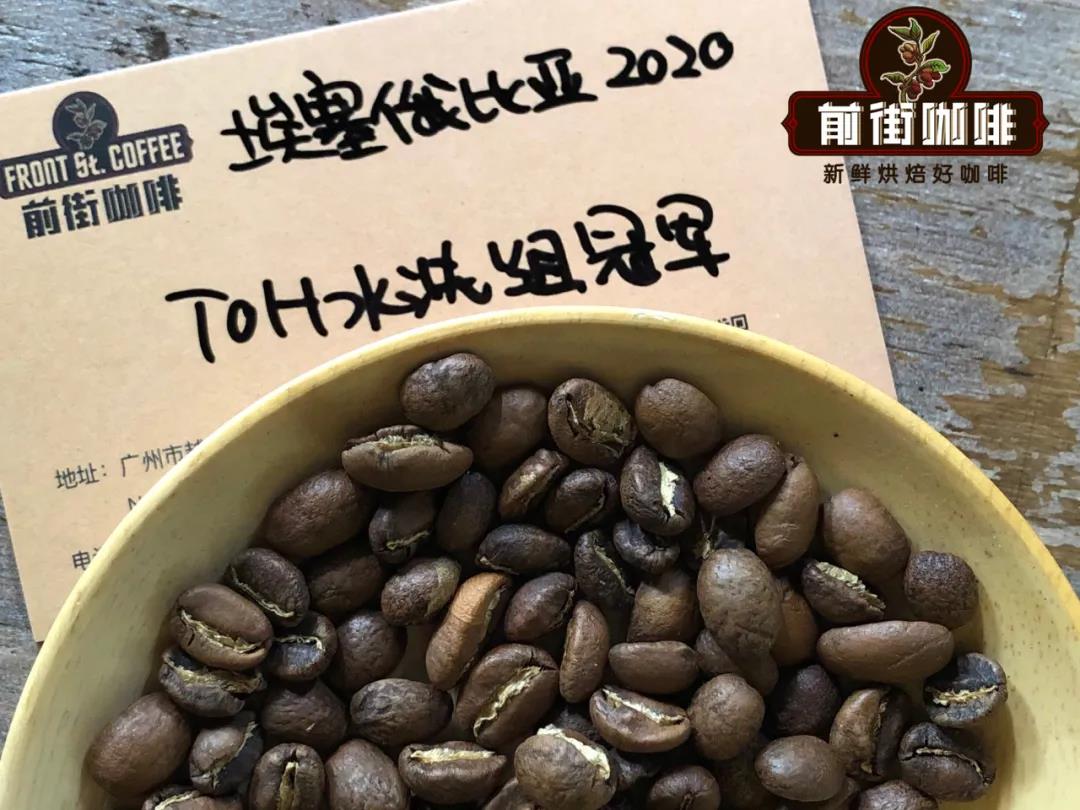
Different methods of raw bean treatment
The COE#22 of Qianjie coffee is tanned. Unlike the traditional sun treatment, in order to ensure the stability of this coffee bean, more painstaking efforts have been spent on the sun treatment. Manual uniform turning is required before the moisture content is reduced to 25%, and every 30 to 60 minutes to avoid unpleasant excessive fermentation, which leads to higher labor costs for sun treatment. In addition, due to the weather risk factors and the longer days of sun treatment, it takes more manpower and resources to get better quality sun-cured coffee beans. Judging from the scores of the top 28 sun-tanned coffee beans in this COE competition, good sun treatment is indeed a way of coexisting risks and rewards. Sun treatment will make coffee beans sweeter and smoother.
The TOH washing group of Qianjie coffee # 01 adopts the water washing method. After careful selection, the picked coffee fruit will enter the process of washing. Put the screened coffee fruit into a peeling machine and initially remove its skin and pulp; put the coffee beans with residual pectin into water and let them ferment for about 18-36 hours; after fermentation, wash the raw coffee beans with parchment in a flow tank to remove their pulp and pectin; dry the coffee beans after cleaning or dry them with the help of a dryer to reduce the moisture content to about 12%. Finally, remove the parchment of raw coffee beans. Through the cup test in Qianjie, it is considered that the washing method highlights the acidity of coffee beans in Wulaga area and the overall cleanliness of coffee.
Qianjie Coffee Baking record
COE#22 roasting record of Qianjie coffee: Yang family 800N semi-direct fire, roasting quantity: 480g. The furnace temperature is 170 ℃, the firepower is 130, the throttle is set up 3; the temperature recovery point is 1: 39: 32 ", when the furnace temperature is 100.2 ℃, the firepower is unchanged; the baking door is adjusted to 4pm in 3 minutes and the firepower is increased to 140min. When the furnace temperature is 150.5 ℃, the bean table turns yellow, the smell of grass disappears completely, and enters the dehydration stage. When 8 minutes 39 hits 36 ", the bean surface appears ugly wrinkles and black markings, and the taste of toast obviously turns into coffee, which can be defined as a prelude to an explosion. At this time, you should listen clearly to the sound of an explosion point, to 9 minutes after the development of 30 seconds, 192.5 ℃ under the beans.
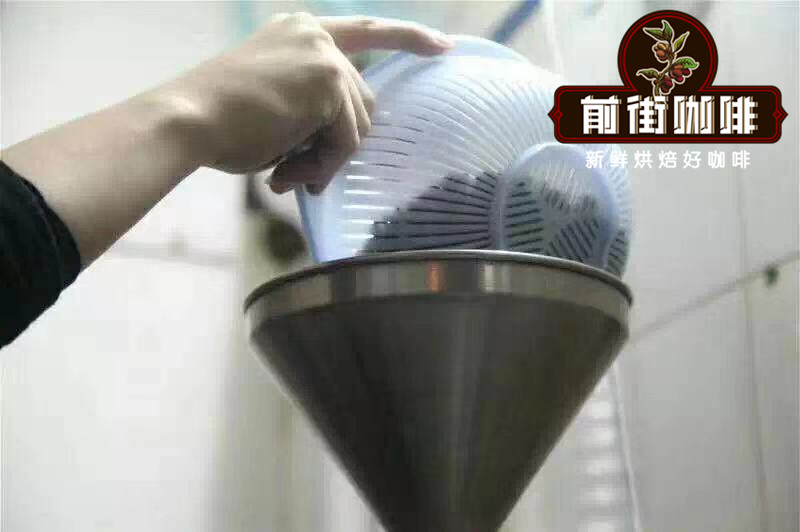
Qianjie coffee TOH washing group # 01 baking record: Yang family 800N semi-direct fire, baking quantity: 300g. Furnace temperature 180 ℃ into the pot, firepower 130, throttle open 3; tempering point 1 "temperature 39 + 36", furnace temperature 140℃ will open the throttle to 4, the firepower will not change; when the furnace temperature 151℃, the bean meter turns yellow, the smell of grass completely disappears, enters the dehydration stage, and the firepower drops to 110. The smell of toasted bread has obviously changed to the smell of coffee, which can be defined as a prelude to an explosion. At this time, it is necessary to listen carefully to the sound of the explosion point. The sound of the explosion point starts to explode when the air door does not open to 5. After an explosion, the development of the bean surface will be changed to 1 hour, and the 193.2 ℃ will be put into the pot.
Coffee cup test report on Qianjie
Qianjie Coffee will be tested within 8-24 hours after the beans are roasted. The barista in front street uses the 200ml standard cup to test the bowl. The pass rate of the standard sieve 20 is 70% Mel 75%, the powder quantity is 11.1g, and the water temperature is 94 degrees Celsius. First grind and smell the dried incense, then fill the bowl with water. Confirm the wet incense, break the residue and pick up the residue after 4 minutes to taste the flavor. From the cup test report, we can notice that the flavor of COE#22 tends to be soft and smooth, while the flavor of TOH#01 tends to be fresh and clean.
COE#22 cup test
Dried fragrance: citrus
Wet fragrance: citrus, camellia
Flavor: citrus, litchi, honey, cream, wine, mango, strawberry
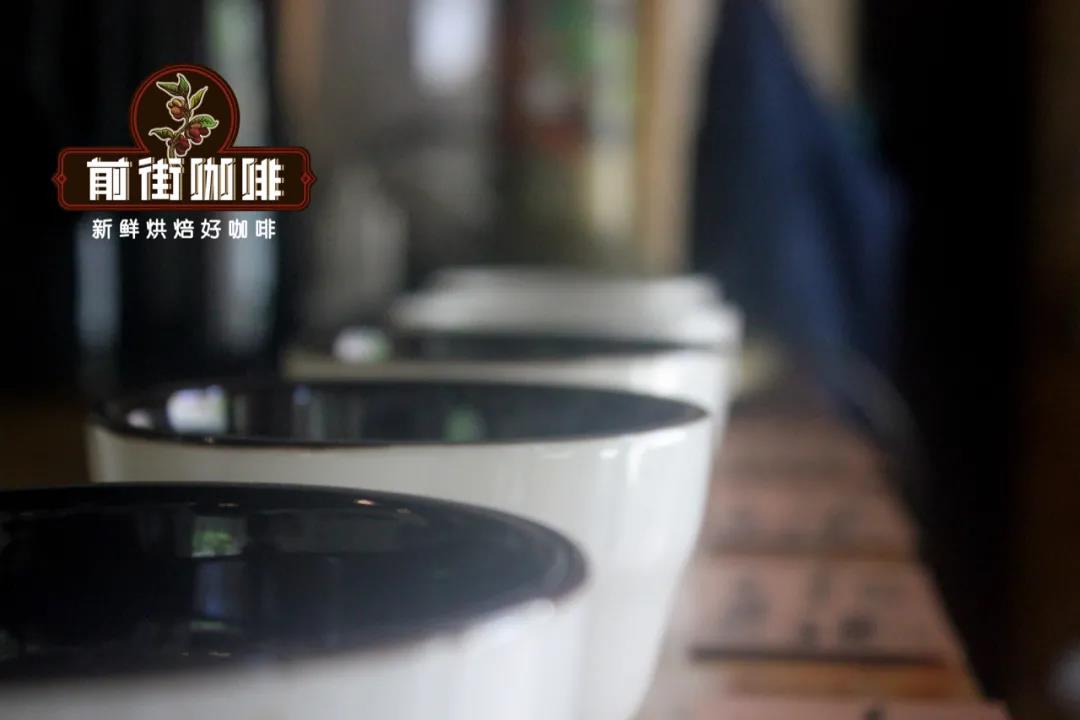
TOH washing Group # 01
Dry fragrance: flower fragrance
Wet fragrance: citrus
Flavor: Jasmine, lemon, berries, grapefruit, honey, green tea
Suggestion on brewing coffee in Qianjie
Filter cup: V600001
Powder content: 15g
Ratio of powder to water: 1:15
Water temperature: 91 °C
Degree of grinding: medium fine grinding (sieve powder in No. 20 sieve bowl to 78%)
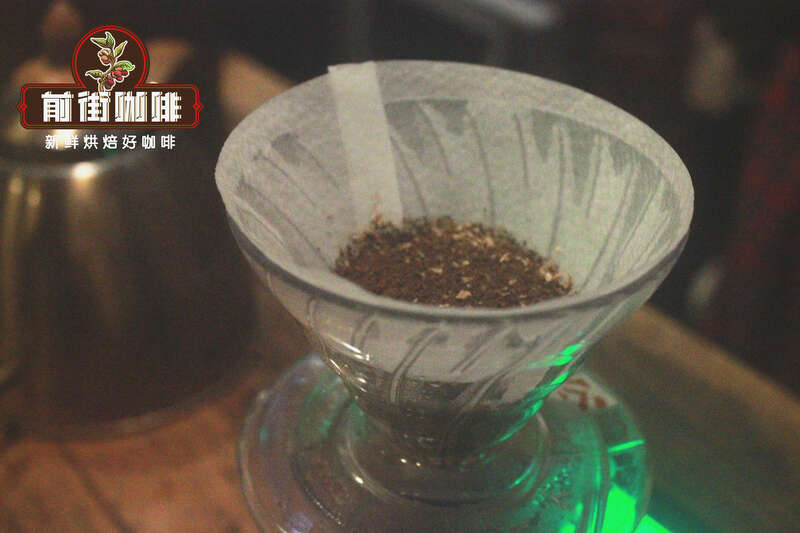
The front street cooking technique: first wet the filter paper and preheat the filter cup and the coffee pot. Steam with 30 grams of water for 30 seconds, small water flow around the circle to 125 grams for sectional injection, water level drop is about to expose the powder bed, continue to inject water to 225 grams to stop injection, and so the water level drop is about to expose the powder bed to remove the filter cup, (steaming starts timing) the extraction time is 2 minutes 39 percent 02 ".
COE22 famous cooking flavor: sweet and sour strawberries and lychees, fermented wine, creamy smoothness, honey finish.
TOH washing group champion cooking flavor: citrus acidity, jasmine aroma, middle grapefruit tea, honey finish.
Those who like refreshing taste can choose TOH washing group # 01 coffee beans, and those who like full taste can choose COE#22 coffee beans.
For more boutique coffee beans, please add private Qianjie coffee on Wechat. WeChat account: kaixinguoguo0925
Important Notice :
前街咖啡 FrontStreet Coffee has moved to new addredd:
FrontStreet Coffee Address: 315,Donghua East Road,GuangZhou
Tel:020 38364473
- Prev
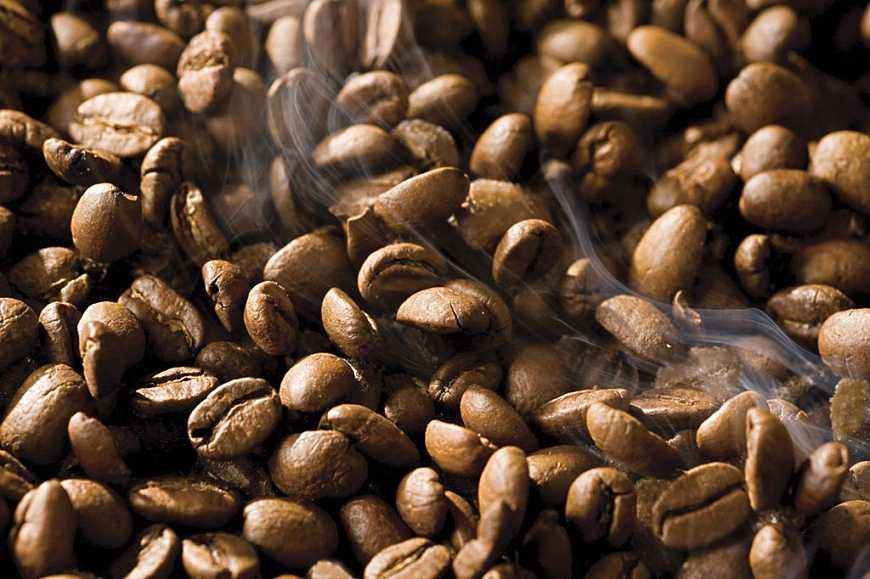
Roasting of raw beans in Ethiopian coffee
Following caf é comments (Wechat official account vdailycom) found that Beautiful Cafe opened a small shop of its own Ethiopia: the place where coffee was born Ethiopia is recognized as the birthplace of coffee and the birthplace of all kinds of coffee we taste today, it plays an important role in the history of coffee development. With respect and admiration for the birthplace of coffee, Starbucks
- Next
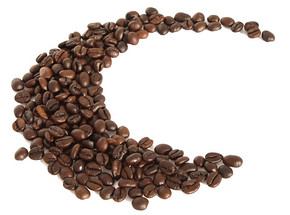
Ethiopian coffee producing area, Ethiopian coffee introduction
Following Kaiping (Wechat official account vdailycom) found that Beautiful Cafe opened a small shop of its own. There are more than 140 varieties of coffee in Ethiopia in East Africa, which means the land inhabited by sun-tanned people in ancient Greek. Ethiopia's unique cultural tradition, spectacular scenery, pleasant climate, rich animal and plant resources, and important places of interest
Related
- Detailed explanation of Jadeite planting Land in Panamanian Jadeite Manor introduction to the grading system of Jadeite competitive bidding, Red bid, Green bid and Rose Summer
- Story of Coffee planting in Brenka region of Costa Rica Stonehenge Manor anaerobic heavy honey treatment of flavor mouth
- What's on the barrel of Blue Mountain Coffee beans?
- Can American coffee also pull flowers? How to use hot American style to pull out a good-looking pattern?
- Can you make a cold extract with coffee beans? What is the right proportion for cold-extracted coffee formula?
- Indonesian PWN Gold Mandrine Coffee Origin Features Flavor How to Chong? Mandolin coffee is American.
- A brief introduction to the flavor characteristics of Brazilian yellow bourbon coffee beans
- What is the effect of different water quality on the flavor of cold-extracted coffee? What kind of water is best for brewing coffee?
- Why do you think of Rose Summer whenever you mention Panamanian coffee?
- Introduction to the characteristics of authentic blue mountain coffee bean producing areas? What is the CIB Coffee Authority in Jamaica?

